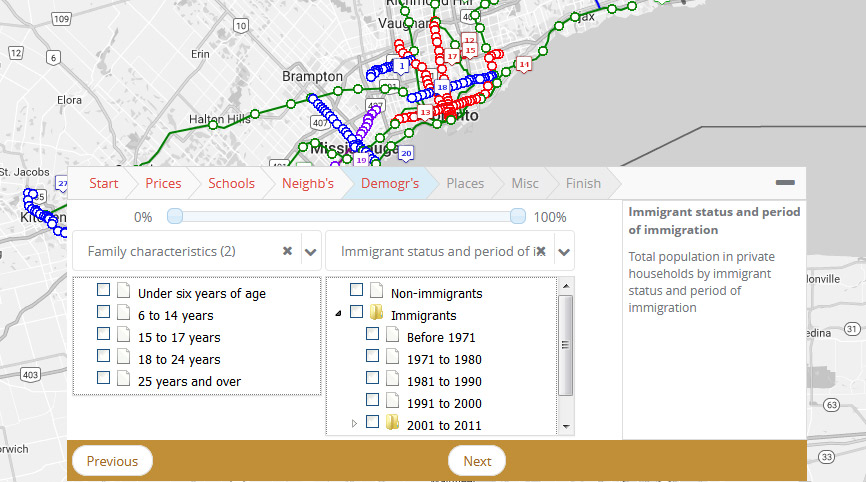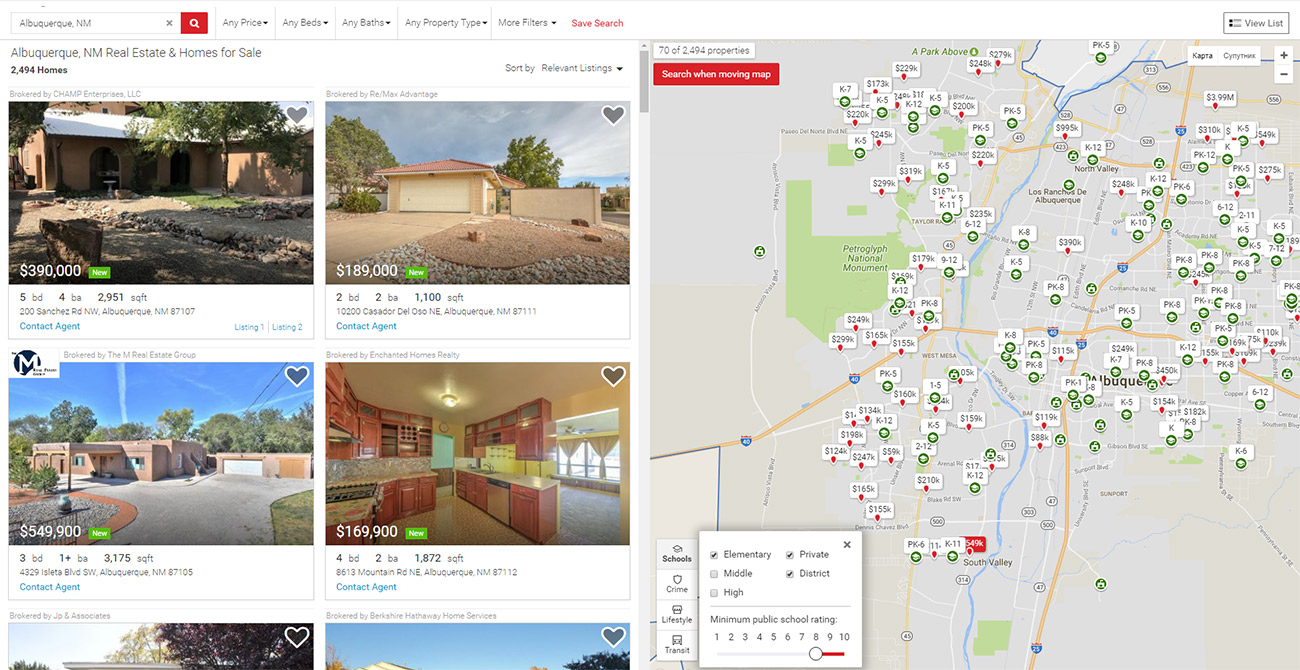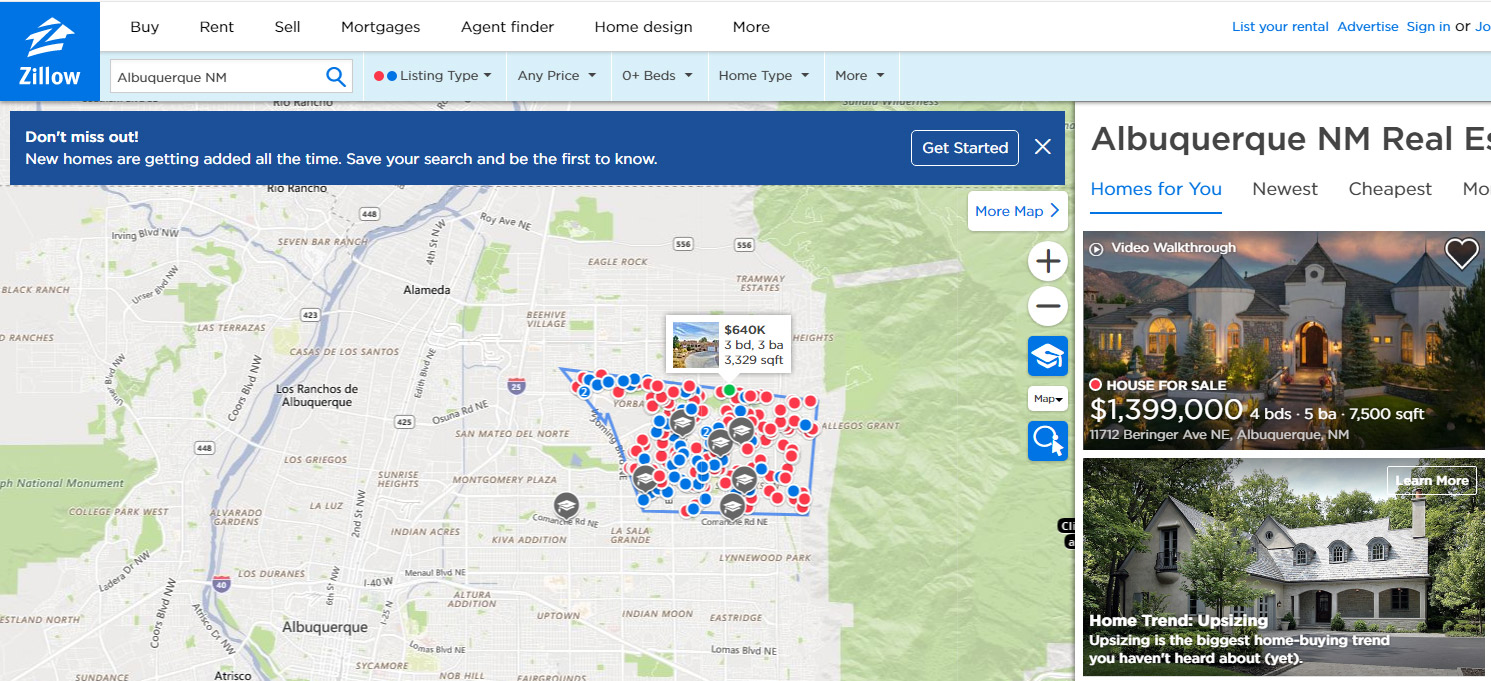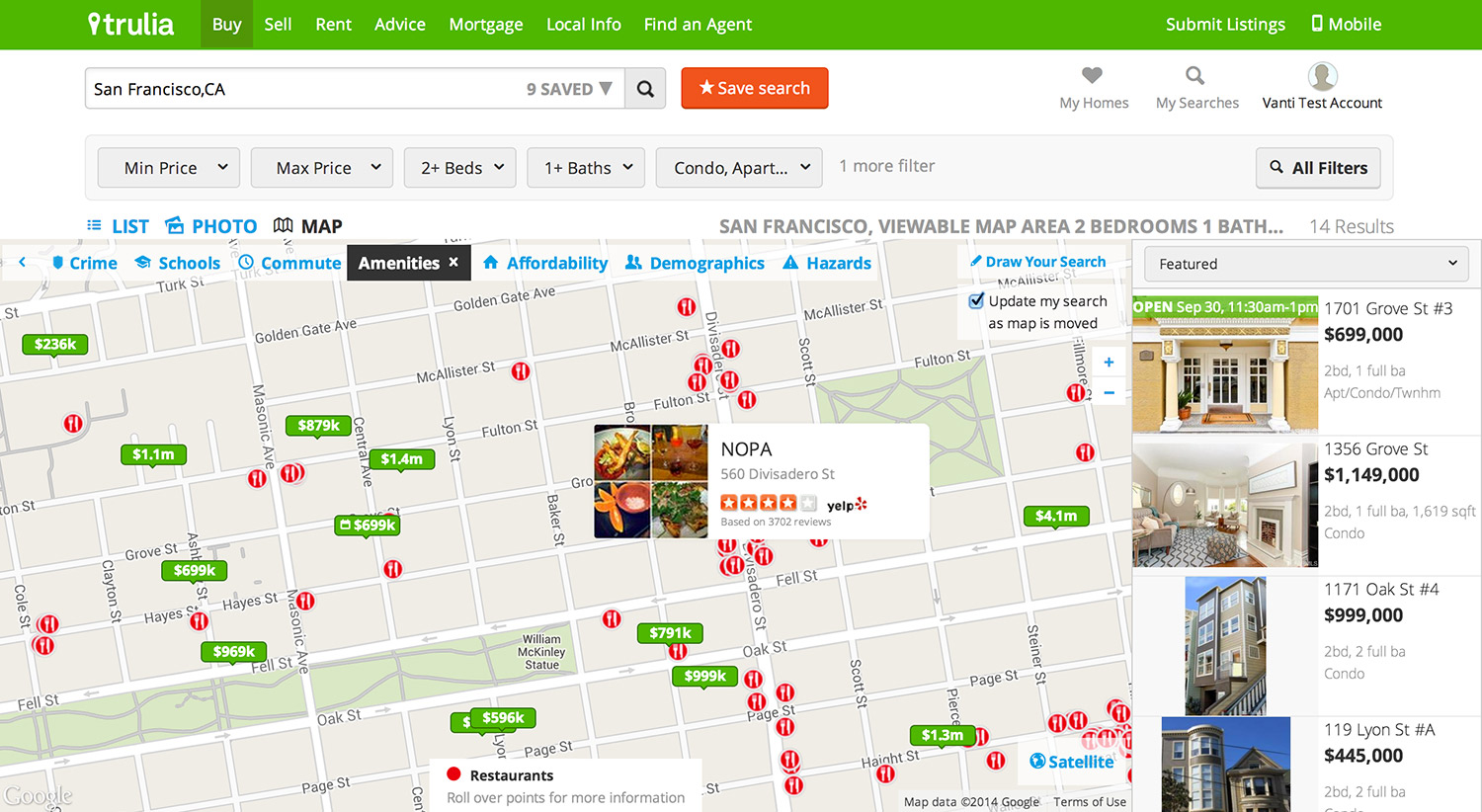
No doubt, selling and renting real estate is a lucrative business. Like any business where a single transaction can amount to millions of dollars, the real estate industry is a breeding ground for all kinds of big and small ventures. One of the easiest ways to tap into the real estate industry bonanza is to create tools that help people selling and renting out property meet their customers. It can be done through a multiple listing service (MLS) website.
Yes, there are quite a few MLS property listing websites on the web. However one can still compete with them by offering a better user experience. Buying and renting real estate usually involves lots of research before a buyer makes the final decision. Therefore buyers and tenants typically visit multiple listing websites to check prices and availability. So any MLS listing site has chances to have a decent traffic.
Since too many real estate agents have access to the multiple listing service database, the exclusivity of information is not something property listing websites can compete on. Therefore only the trustworthy look and feel as well as value added features can be cards up sleeve for MLS listing businesses operating in fierce competition.
If you are an entrepreneur whose company offers MLS listing services, you either already have a website or are looking to build one or make the existing one better. If you need your site designed or revamped, you must have many questions about how to go about building a professional online presence and what to expect from web design and development service providers you are about to hire.
We have already published an article telling how web designers and developers can help real estate businesses. However, we would like to delve into what it takes to build a professional MLS listing website.
Design and Development Team
It is really hard to find a full stack developer who can build an MLS listing website singlehandedly. If you care about the quality of your web project and want your real estate business to become a landmark in your industry, you should go for hiring a web design and development team that would include the following members:
account manager (guides the customer through the project, ensures correct task management and fast feedback between the customer and the development team);
project manager (takes care of all technical issues emerging during the project, coordinates work between all employees involved in the development process);
business analyst (creates the project requirements list, scope of work, functionality list, user stories and clickable prototypes with tools like Axure RP and Adobe Experience Design); graphic designer (creates custom UI mockups);
front-end developer (turns the UI mockups into web pages functioning in users’ web browsers); back-end developer (works with servers, databases, and APIs to ensure the correct flow of data between the server and user interface);
quality assurance engineer (applies manual and automated testing to ensure the client receives the fully operational code in the intended environment).
A crew like this can guarantee you will get a full-featured website that can compete with industry leaders such as Realtor.ca and Zillow.com. Internal project management, expertise transition, and information sharing procedures make it possible to speed up the development process by 20-40% without affecting the final project quality.
Website Infrastructure
Knowing the project infrastructure is important for streamlining the development process. Here are a few essential infrastructure elements that the website owner and developers should pay attention to.
Front-End
Since real estate buyers visit multiple MLS websites to search for available property, they are likely to have a good idea of how professional real estate sites should look and what kind of features customers can expect. So it is of paramount importance that your website looks sleek and trustworthy and follows the best practices of the real estate listing business.
When designing a property listing website, one should consider building the following pages:
Home Page (incl. property search block, featured listings blog, testimonials block);
Property search page
Property details page
Individual page for each online tool offered by the company (home price evaluation, mortgage calculator, agent finder etc.)
About us page
Contact us page
Personal user’s profile
There can be many more pages depending on the range of services the property listing website offers. The business might want to design individual pages for for-rent and for-sale properties, different types of properties (selling now, coming soon, elite, low-rise, foreclosures, new construction etc.).
One thing web design company’s customers should remember is that the home page takes 5 times as much time to design as a single peripheral page. So if a home page requires 30 hours of the web designer’s work, a peripheral page would take 6 hours to be designed (including the project manager’s time).
The property search feature is the heart of an online MLS listing system. This is where one can add lots of value to the business by adding extra result filters and search criteria. An interactive map is tied to the search tool as the search results are displayed on the map. Below is a mock-up of a property search block to be implemented on a website. As you can see, it incorporates quite a few filters that help prospects pinpoint the best listings based on their needs.
The more control over the search a website can offer to visitors the more chances there are for potential property buyers and tenants to find the best deal on the site.
Some MLS listing websites attract more customers by offering extended information on neighborhoods. They can provide data on schools including their rating, type, and languages that are being taught there. Websites make it possible to overlay census data on the map for customers to see some demographics data about the neighborhood.

Real estate website development, demographics data search feature
Demographics data search filters. Source Horseshoerealestate.com
Since the new property is often bought by families with kids, school search is a popular feature for many real estate listing websites. Finding a home near a good school is something families cannot miss out. Therefore offering such functionality is not to be missed out by MLS listing website owners.

Real estate website development, school search feature
School search feature. Source: Realtor.com
There are lots of third-party APIs that allow displaying all sorts of relevant data on maps. Besides schools and MLS data, the expanded data may include information about transportation, neighborhood crime rate, lifestyle facilities and whatnot.
The interactive map and related features are truly the lifeblood of any online property listing business. It’s a powerful and flexible tool that allows customers to pinpoint the best real estate offering based on multiple criteria.

MLS listing website development, interactive map of property listings
The interactive map allows customer to draw a region where property listings should be displayed.
Back-End
The starter infrastructure of a website always includes a hosting server. Cloud hosting is a popular solution these days. Cloud servers such as AWS provide extra security due to certifications like PCI DSS Level 1, SAS 70 Type II, FISMA Moderate, HIPAA and ISO 27001. Cloud servers are also cost-efficient thanks to their elasticity and ability to scale up and down in response to load. In other words, the servers automatically adapt their performance to traffic peaks.
The MLS system has to handle large data volumes and intense front-end/back-end interaction. This is why building an MLS listing website requires experienced back-end developers that can tackle complicated data flows.
Email newsletters are one of the most powerful marketing tools for real estate agents. Keeping in touch with potential customers is always a good idea. The real estate listing website will require the integration of an email subscription service such as MailChimp. Back-end developers will have to apply some rDNS methods as well as MX and SPF record configurations to bypass spam filters.
Web developers will have to take care of the Google Maps API and associated libraries to make it possible to overlay search results on the interactive map. They will use the JSON technology to make it possible to display objects on the map.

MLS listing website design and development, Yelp API integration
Third party APIs such as Yelp API fuel real estate listing business with lots of information about neighborhood amenities and infrastructure. Image credit: Yelp blog
The advanced search feature may include data on neighborhoods which means more APIs should be involved. Back-end developers will tackle all sorts of APIs such the Census Bureau API, the school rating API (e.g., Great Schools API), location-based data such as the neighborhood crime rate (e.g., Location Inc.), Yelp API, etc.
The best property listing websites offer additional tools and features designed to help real estate buyers make the best purchase decision. Those tools and features may include the mortgage calculator, home value calculator, rent vs. buy calculator, affordability calculator, instant location-based notifications, agent search, home search by interior design, virtual 3D tours, etc. All these tools require the attention of both front-end and back-end developers.
Development Process
As a rule, a web design and development team creates the collaboration environment to ensure an efficient communication between different employees involved in the project. Our company prefers using BaseCamp and Jira project management platforms for this purpose.
The project owner, being the developer of the business model and project values, is the integral part of the development process. No expert can articulate project values to the future clients better by setting development tasks and priorities. Developing such a sophisticated system requires a variety of expertise in UI, UX, marketing, psychology, web development, etc., so the project tech team is the right place to request and get expert opinions, risk evaluation and other decision-making information. The project owner has access to reports and the website as it is being built on the development server. There is also a staging server where quality assurance engineers test the site performance and correspondence of works performed to the plan and agreed acceptance criteria.
Our QA specialists use the full cycle of testing (unit testing => integration testing => functional testing => acceptance testing). They use a robust approach to testing the code starting from writing user stories and use cases to automated tests. For back-end testing we use Codeception. For complex testing including load testing, we use JMeter. Also, we have a good experience in using Cucumber and forks for front-end testing.
As with many services, there are always the high-end, standard and best-practice solutions to any issue. In the case of developing an MLS listing website, two major approaches are possible. The first approach is cheaper and it suggests using a pre-built HTML template like Cozy. Our experience shows that a project like this would require around 180-200 hours of development, 60 hours of quality assurance testing and 50 hours of project management.
Although customizing HTML and JavaScript of a predesigned template requires almost the half of the amount of work it would take to build the MLS platform from scratch, the problem with such an approach is that it limits the business scalability.
QuartSoft’s developers believe the best approach to building an online property listing business would be the model-view-controller (MVC) architecture. The MVC technology was originally developed to build desktop applications. However, it is widely used for web applications too these days. No wonder web-based apps built with the MVC structure feel like native mobile and desktop applications because of enhanced dynamic interactions they offer. Since such apps mostly run on a single page using Asynchronous JavaScript and XML (AJAX) to communicate between the server and client side of the website, they are often called single-page apps (SPAs). The MVC architecture is the most advanced approach to developing websites that makes online businesses much easier to scale, modify and maintain thanks to independent components. Our web developers use JavaScript frameworks such as Angular and Ember to build MVC-based web apps. To better understand how an MVC app feels and works, consider exploring your Google’s Gmail service. According to our rough estimates, the client should expect 320-360 hours of development, 80 hours of quality assurance and 60 hours of project management to build an MVC-based online real estate listing business.
Pricing Policy
Web design companies usually employ the following three pricing models for their standard services:
The fixed budget model is applied to small, initial or single-service projects on the basis of the detailed scope of work, functional requirements list and project schedule. As a rule, the fixed budget model is offered when the final product is described in detail which allows for an accurate price estimation and work schedule. The scope of work and the list of requirements should remain unchanged in the course of the entire project.
The time & material model is applied in case when it is hard to specify the ultimate list of requirements for the project, when tasks are likely to change during the development process or there is a variety of technical requests to be processed on a planned basis (i.e., maintenance, bug fixing in unknown projects, small startups). The pricing can be based on sprints with the agreed functionality and deployment schedule.
The dedicated model is applied to projects with a huge amount of planned development and often involves R&D services. It is most effective for deploying big startups.
We hope this article will be useful for real estate entrepreneurs looking to build their MLS property listing assets on the World Wide Web. The information in the article is brought to you by a web design and development team with a long history of building strong online presence for a variety of companies, including those in real estate. Having launched a few online real estate platforms, we acquired enough experience to help real estate entrepreneurs successfully deploy and support database-driven solutions for their web-based business activities.
Our team of web designers and developers will be happy to assist in launching your online venture or enhancing the existing website. You are welcome to contact us for a no obligation quote for your web design and development requirements.

No comments:
Post a Comment